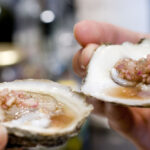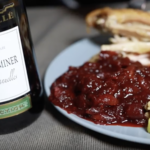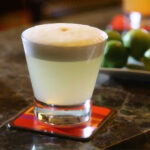
Our driver switches gears as he climbs the winding hill to Red Mountain Estate Vineyards & Winery, the second of Myanmar’s two wineries. It’s burning season, and the sky is orangey gray, but you can still make out a hazy Inle Lake in the distance. The views of the vines from the tasting room are beautiful, yet feel strange juxtaposed against the undeveloped area spread out in front of us.
When people think of the world’s great wine destinations, Myanmar doesn’t immediately come to mind. Let’s face it; this Southeast Asian country isn’t known for its grapes or its alcohol. But two local vineyards in the southern Shan State are trying to change that.
The country’s first, Aythaya Vineyard, opened in 1999 after relocating due to the region’s political and economic turmoil. The vineyard’s former owner, Bert Morsbach, a German wine-lover, shipped over 14,000 vines, mainly Shiraz and Cabernet Sauvignon, from an area near Burgundy to the small town of Aythaya, close to the tourist area of Inle Lake.
Why choose to start a vineyard in a relatively unknown country to most Westerners? Morsbach says it’s the weather, “I started the project because I thought, a country with 150 days of sunshine is the right environment for a hobby of mine: viticulture.”

Three years after Aythaya opened its doors, Red Mountain Estate Vineyards & Winery bought its equipment in Italy, started to prepare its first plots, and hired experienced French winemaker Francois Raynard. Red Mountain was started by a large local family business called Ruby Dragon Group looking to diversify their portfolio. Much like Morsbach, they too saw an opportunity for success with the region’s favorable climate.
A Place Well Suited to Grapes & Wine
“Myanmar is not widely connected with winemaking but the perfect microclimate of cool nights and sunny days during the harvesting cycle makes for promising quality wine grapes,” says Jennifer Janeth, Head of Business Development for Ruby Dragon Group.
As Myanmar has started to grow and progress after 50 years under ruthless military isolation, tourists are slowly starting to trickle in. Today, both Aythaya and Red Mountain Estate are popular places for tourists and wine lovers visiting the region. Neither vineyard is as high-end or posh as places like Napa or Bordeaux. Instead, wine-lovers should expect a very casual, local vibe with a corresponding price list.
At Aythaya, visitors can walk along the vast rows of vines while the local dogs tag along or sign up for a guided tour. Afterward, they can grab some currywurst in the BBQ area or head to the deck for sweeping views, a pizza, or a classic Myanmar dish like tea leaf salad.

And while the red sun sets over the mountains, guests can try a glass or a bottle selling for between 5 and 19 US dollars. Yearly, Aythaya produces and sells out of 250,000 bottles of red, white, Sauvignon Blanc Late Harvest, sparkling rosé, still rosé, and their dessert wine. They also make a unique local Lychee Brandy as well as Grappino and bottle wine from South Africa.
Red Mountain Estate produces around 100,000 to 125,000 bottles per year with a slightly more extensive selection of wines selling for between 10 and 21 dollars a bottle. Their list includes Sauvignon Blanc, Chardonnay, Late Harvest, Rosé D’Inlé, Pinot Noir, Shiraz-Tempranillo, Cabernet Sauvignon, Syrah, Muscat Selection and Red Tawny. They also have three new wines, Inlé Valley White, Inlé Valley Red and Inlé Valley Rosé. The charming packaging includes a drawing of the famous leg-rowing fisherman of nearby Inle Lake.
Pioneering and Experimenting
Over the years, both vineyards’ biggest challenge has been figuring out which imported grape varieties worked best with Myanmar’s tropical and rainy climate. “Only five out of a hundred cultivars we tried, finally made it,” says Morsbach. “Most varieties don’t produce enough low yield grapes, and the rest perishes during the rainy season because of too much moisture.”
After years of experimentation, both wineries feel they’ve found the right plants. Aythaya’s come from France and Red Mountain Estates originate from Spain, Israel and France while all grapes are locally grown. With newfound stability, the vineyards are working to produce a higher yield which will allow for more bottles, longer fermentation and more developed flavors. This will also allow them to stock enough to start exporting around the world.

Although Myanmar’s wine hasn’t reached international notoriety yet, Red Mountain Estates won a Bronze Medal for their 2010 Chardonnay at the 2013 Chardonnay du Monde held in France. Upon first taste, much like Aythaya, the grapes needed longer to ferment, but Red Mountain Estate’s Sauvignon Blanc and the Late Harvest are their best and most popular wines.
At 80 years old, Morsbach has recently retired and sold Aythaya Vineyard to a local company. He still sees a lot of hope for the future of Myanmar’s wines. “As soon as the vineyard produces enough wine to set aside a batch for aging, Myanmar will become a famous wine-producing country,” says Morsbach. “The reasoning is that with an altitude of about 1,200 meters, the resulting cool nights during blooming and its early childhood ensure a quality bouquet and aromas.”
With Inle Lake being one of the most popular spots for visitors, it makes sense that these two vineyards be included on the itinerary. They’re both a short and cheap taxi ride away from Inle Lake’s center and offer a peaceful place to sit and watch the sunset lower over the hazy mountains with a plate of cheese and a glass of wine in hand.
Photo credit: Credit Patrick Sgro

Katie Lockhart is a travel and food writer traveling full-time around Asia. She writes for National Geographic, Travel + Leisure, Conde Nast Traveler and many more. Follow her adventures on Instagram at @findyourhappyplate.



